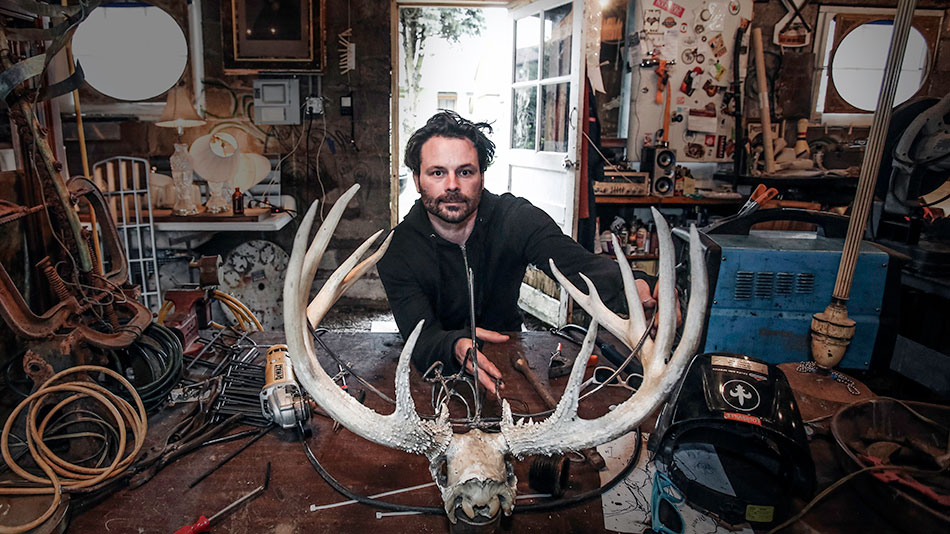He’s working on this old green F-150, the same kind of truck his dad drove when he met him the first time, the same kind of truck he learned to drive in. There’s a hole by the hood where the antennae will go, and the floorboards have rusted through so you can see the ground in spots. But Robert Brown’s been focusing on a different fix today. His seven-year-old nephew’s gonna love it.
“I’m gonna have him stand on either side of the truck,” Brown says, hopping up into the cab. He hits a switch and the wiper sprayers shoot two arcs out to the sides, like the truck’s crying in an anime cartoon. “I’m gonna get him,” Brown says. “Isn’t that awesome? They were busted, and I just redirected them.”
The 43-year-old has always been handy. When he was a kid, he’d get in trouble for taking toasters apart. His mother had this ceramic owl. Brown would pluck out its eyes and play with them when his mother wasn’t looking, but he couldn’t take it apart. “It didn’t do anything, but it did so much,” he says. “I was like, there are no limits, there are no wrong answers to this.” Boom: He was an artist.
You can tell from the sculptor’s studio workshop behind the shotgun house in Clifton he shares with his wife, the singer Carly Johnson, that he’s always been into tinkering. There are metal sculptures of trees, about four bicycles, old picture frames hanging askew from the ceiling, a katana, ripped-out piano keys, a welder’s mask. If Jackson Pollock had been a mechanic, this is probably what his workspace would look like.
Lately, Brown has been working with disco ball material. Businesses have commissioned him to make, for example, a big shiny chicken. He made a squirrel holding a bottle for a company called Lush Life and a big disco record for Matt Anthony, the local DJ and record store owner. He builds metal skeletons and covers them with papier-mâché. The flexible sheets of mirrored tiles he adheres to the papier-mâché come from local disco ball manufacturer Omega National Products. “It’s tons and tons of labor,” Brown says. The chicken took about two weeks of eight-hour workdays. Now he’s building a disco-covered model of a deer skull he took from a cadaver he found in Harrods Creek.
“It’s a different mentality (than metal work),” he says. “You just slow down. You set the music right” — Johnson’s got him on Etta James — “and you slow down.”
This originally appeared in the May 2018 issue of Louisville Magazine. To subscribe to Louisville Magazine, click here. To find us on newsstands, click here.
Cover photo by Mickie Winters



